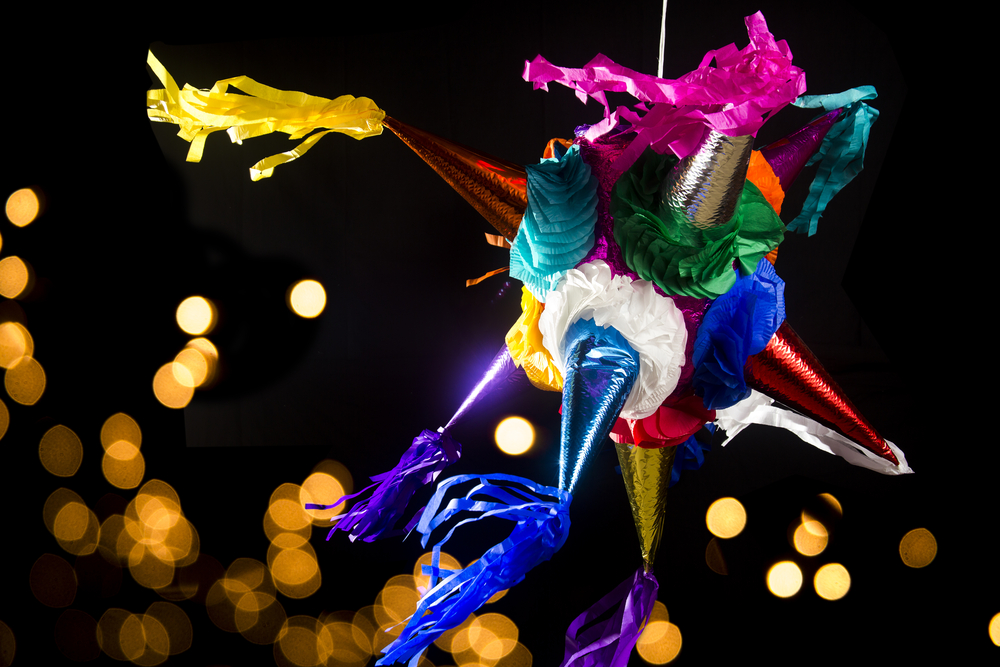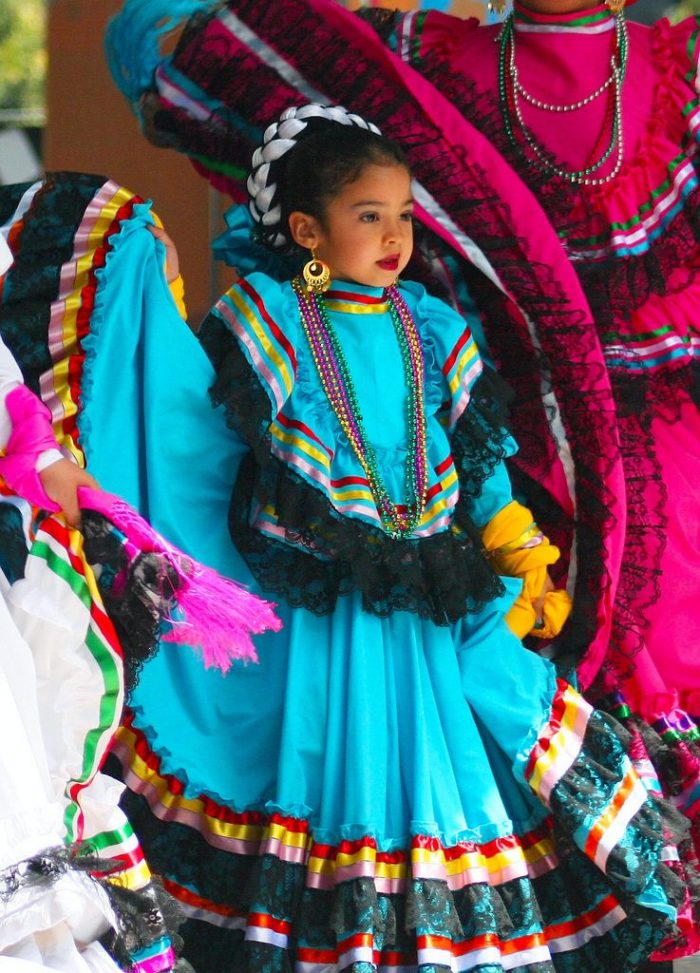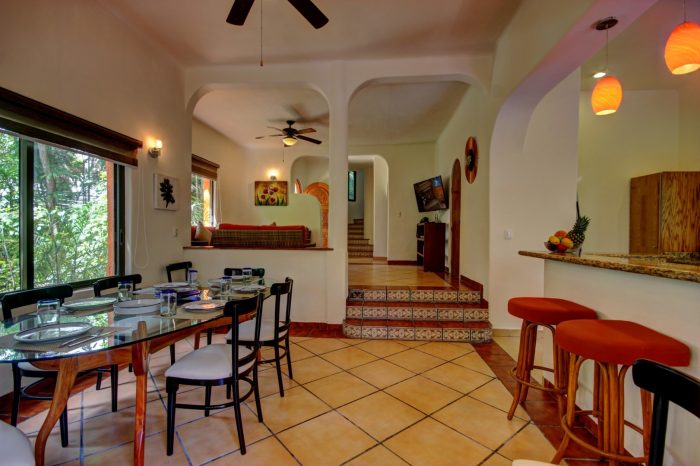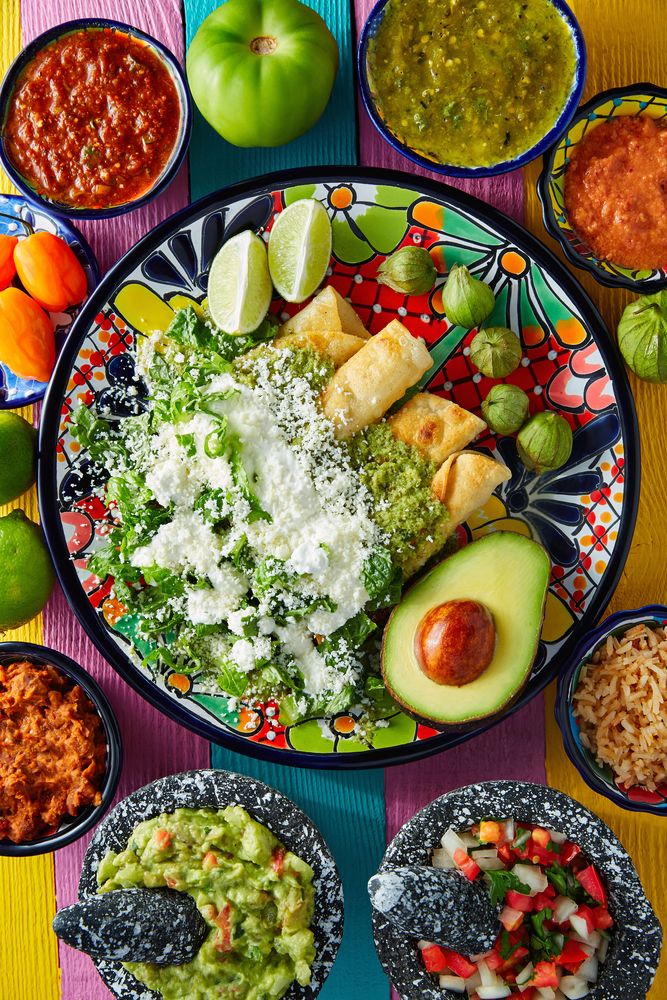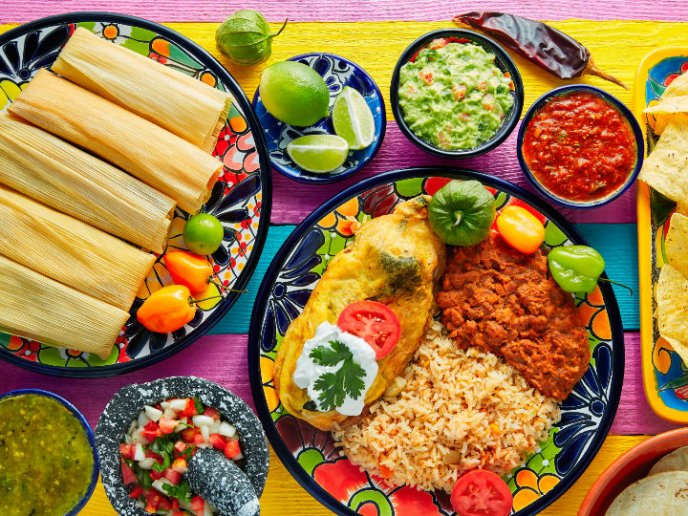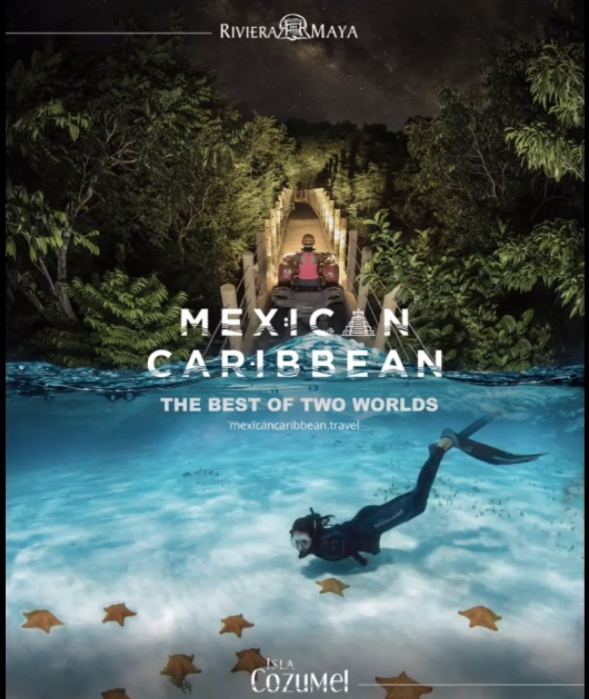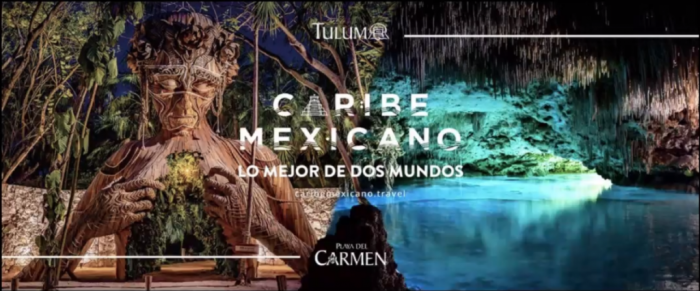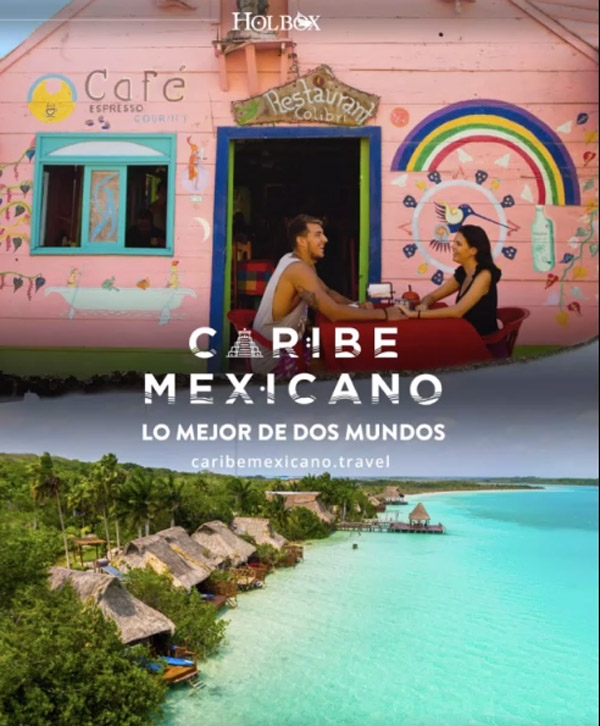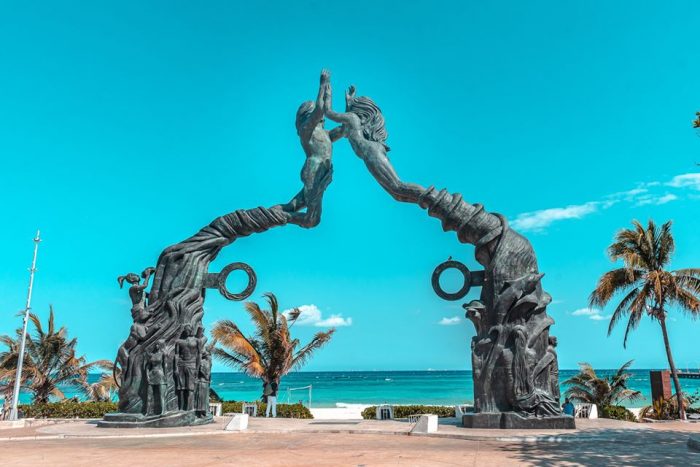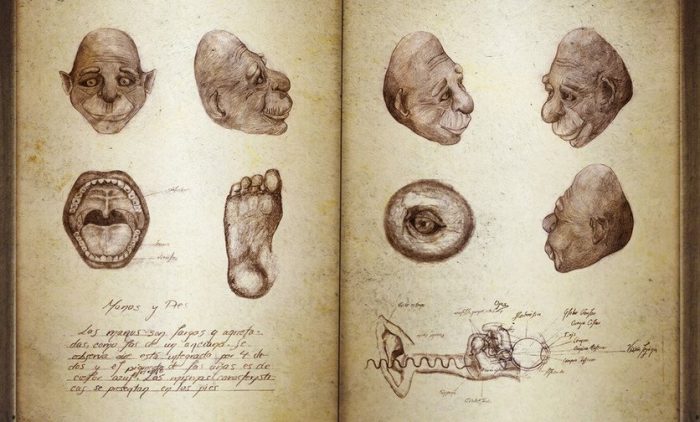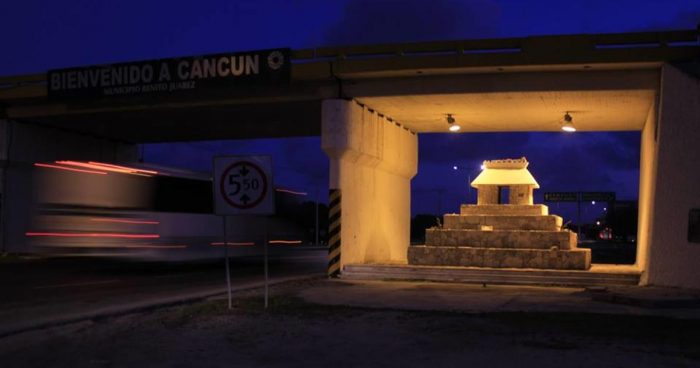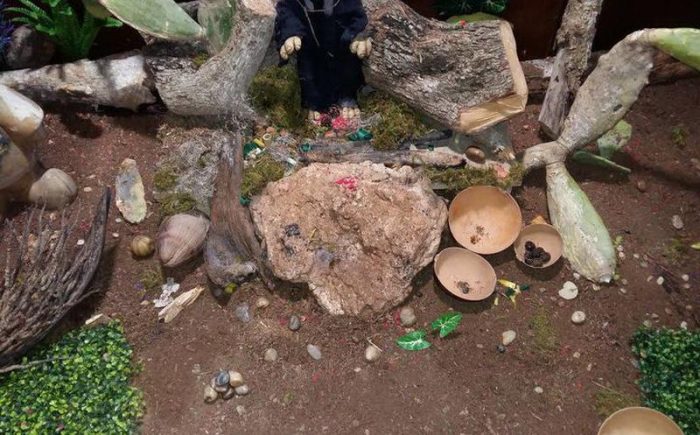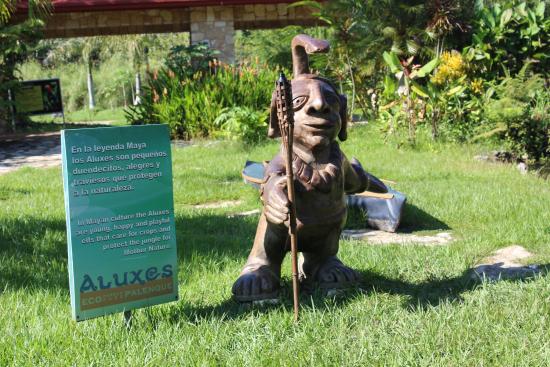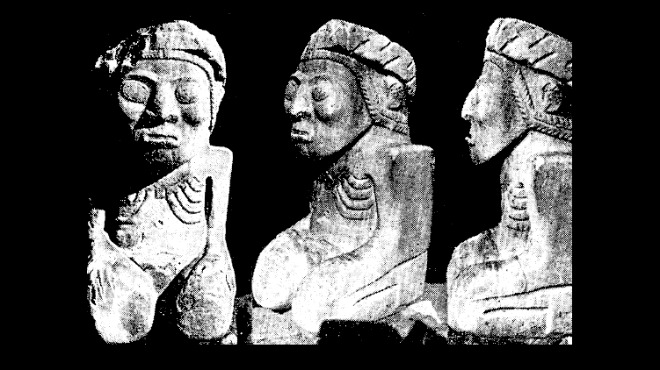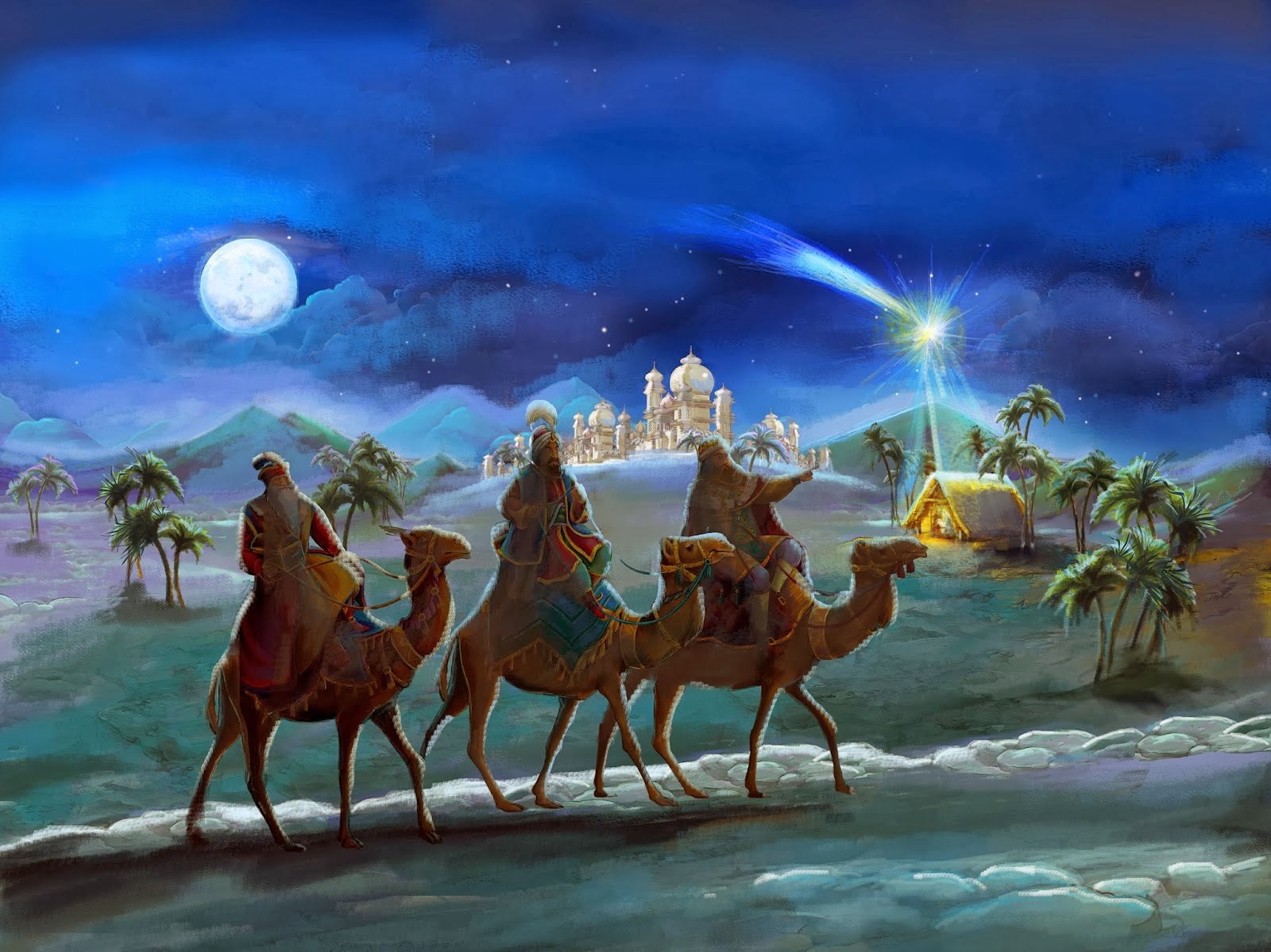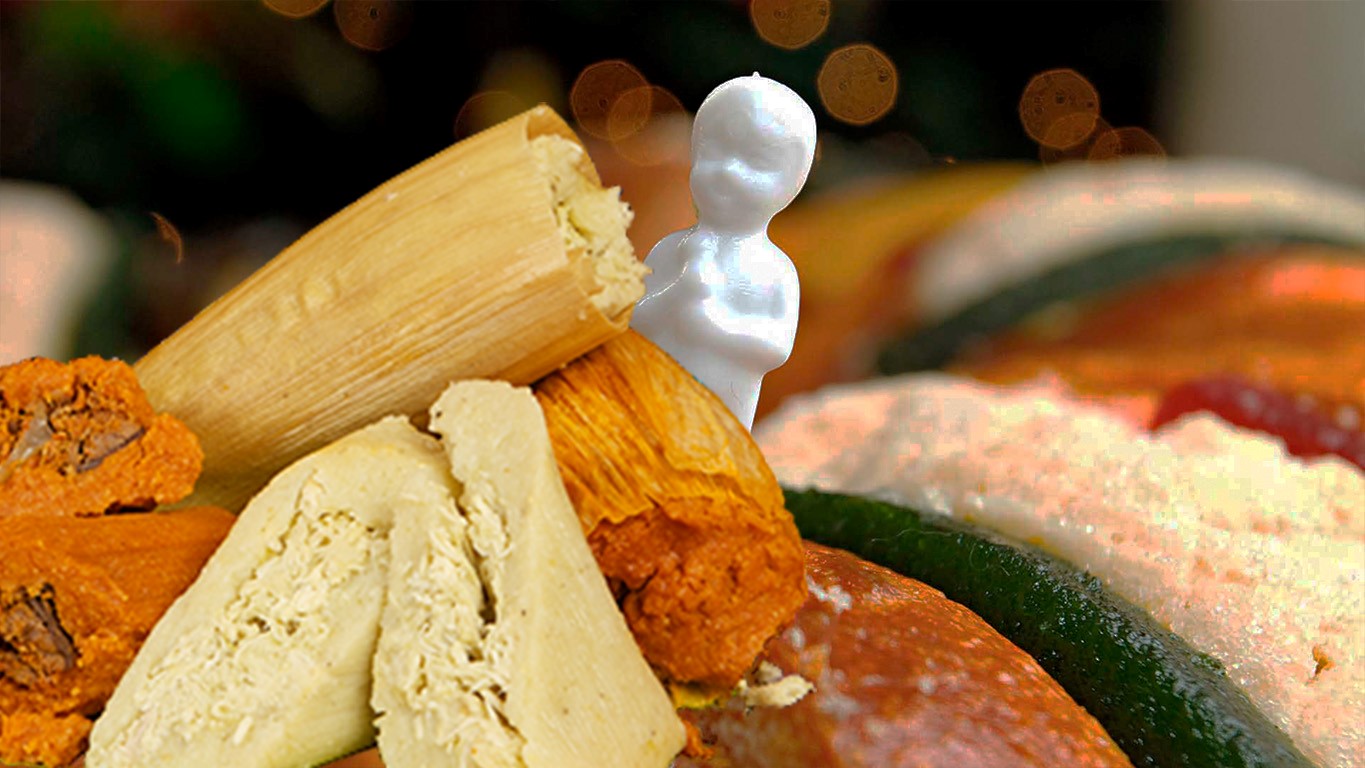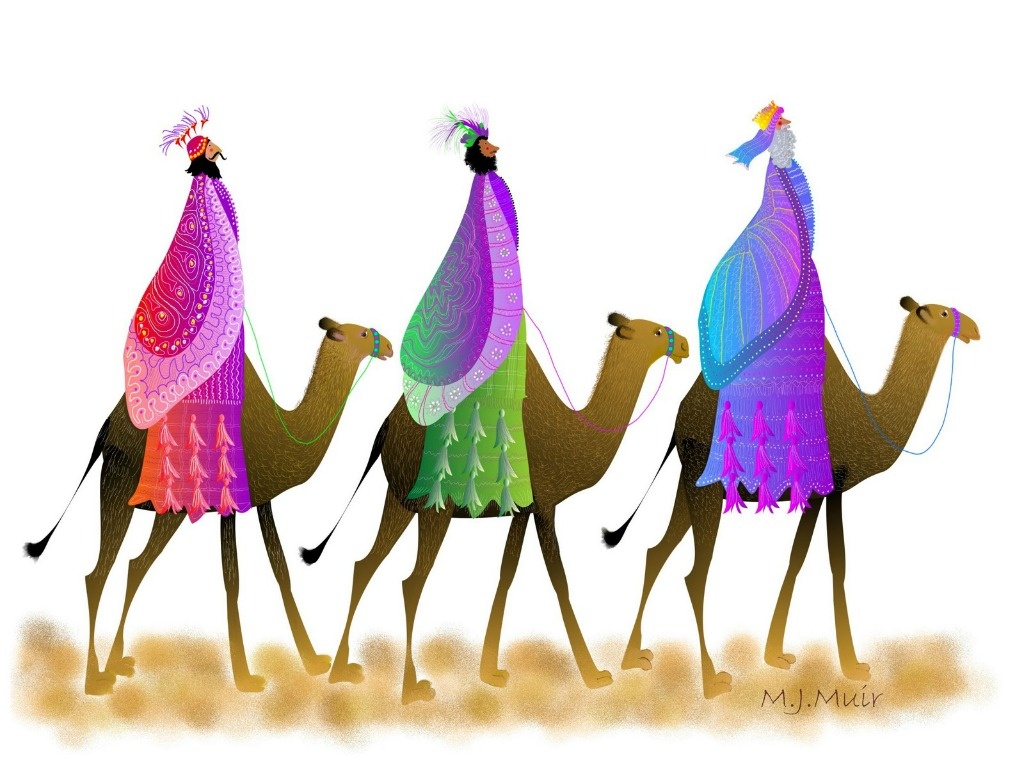Existen distintas versiones sobre el origen de la piñata, una de ellas se relaciona con los viajes del expedicionario Marco Polo a China, quien observó una tradición en la que se acostumbraba romper la figura de un buey relleno de semillas en el marco de la fiesta del año nuevo chino. / There are different versions about the origin of the piñata, one of them is related to the expedition of Marco Polo to China, who observed a tradition in which it was customary to break the figure of an ox filled with seeds in the framework of the festival of Chinese New Year.
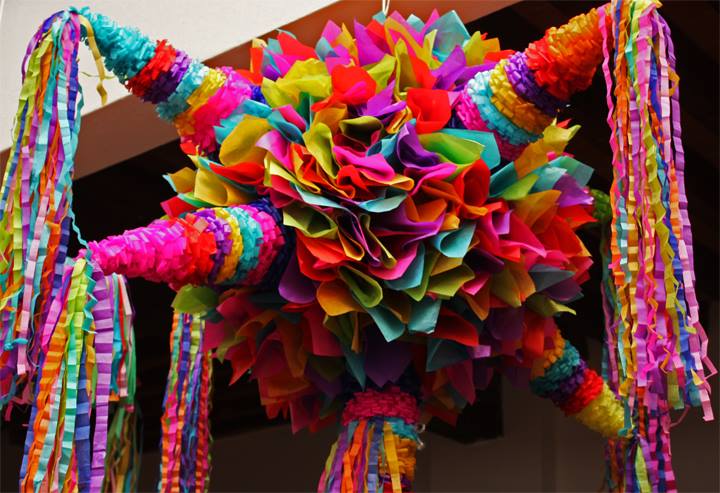
Al darse a conocer esta tradición en Europa, los españoles la importaron al Nuevo Mundo al encontrarle cierto parecido con una las festividades mexicas en honor al dios de la guerra, Huitzilopochtli. / When this tradition was made known in Europe, the Spaniards imported it to the New World, finding it similar to the Mexican festivities in honor of the god of war, Huitzilopochtli.
Otra versión señala que los antiguos mayas solían practicar un juego en el cual, con los ojos vendados, intentaban romper una olla de barro llena de chocolate que permanecía suspendida de una cuerda. / Another version points out that the ancient Mayans used to play a game in which, blindfolded, they tried to break a clay pot full of chocolate that remained suspended from a string.
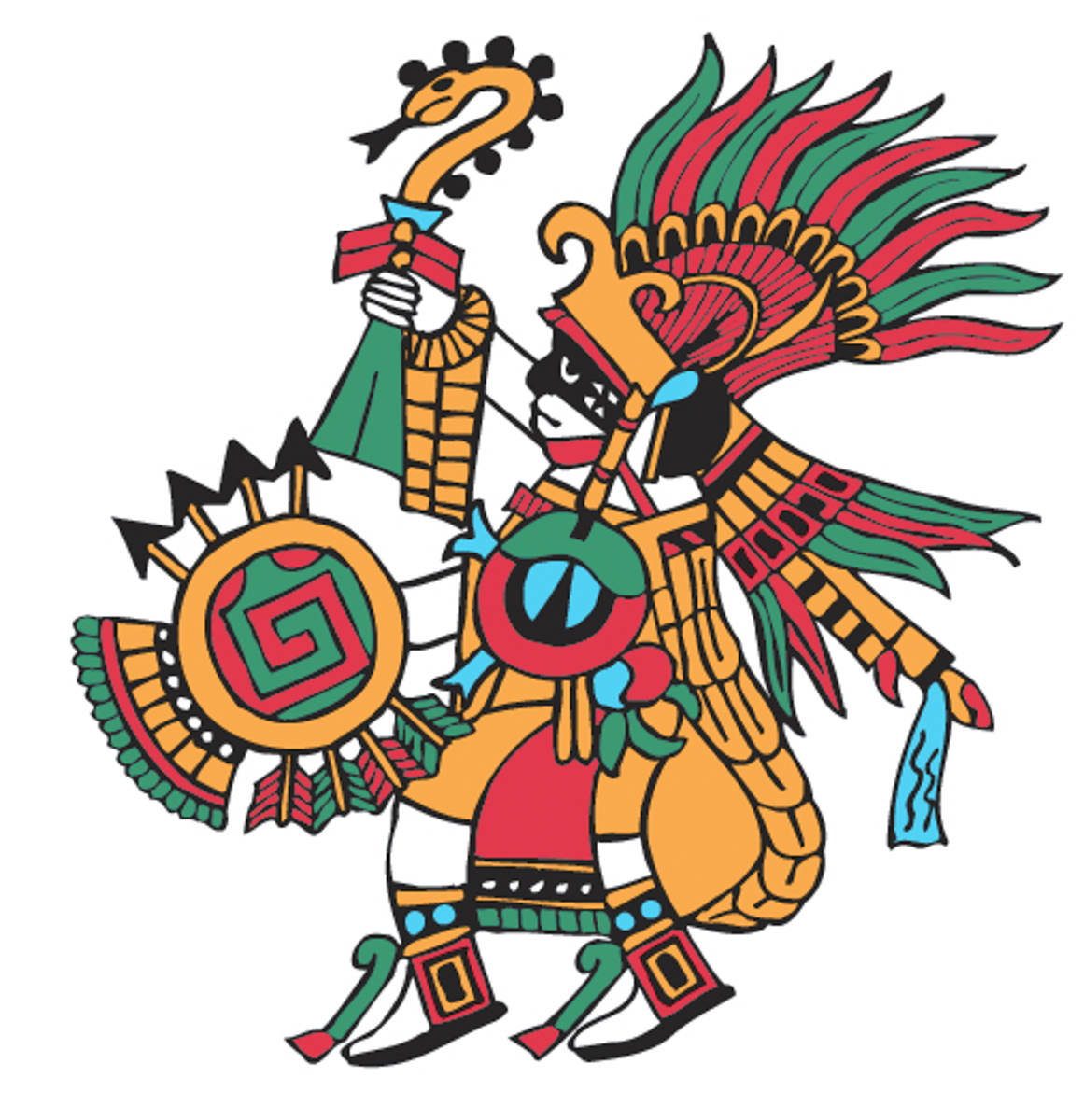
La evangelización fue un proceso continuo en México desde la llegada de los primeros colonizadores españoles a territorio americano. La resistencia de los indígenas a cambiar su cosmovisión, motivó a los frailes de las diferentes Órdenes religiosas a buscar nuevos métodos para implantar el cristianismo como religión única entre los nativos; fue así como se adaptaron y modificaron las festividades y tradiciones indígenas de acuerdo a los valores cristianos para lograr el cometido evangelizador; de esta manera, la piñata devino en un medio para la transmisión y enseñanza de la nueva religión. La implantación de la ideología cristiana marcó el ritmo de esa otra batalla en la que se pretendía borrar cualquier rastro de la religión indígena. /Evangelization was a continuous process in Mexico since the arrival of the first Spanish colonizers to American territory. The resistance of the natives to change their worldview, motivated the friars of the different religious Orders to look for new methods to implant Christianity as the only religion among the natives; That is how the festivities and indigenous traditions were adapted and modified according to Christian values to achieve the evangelizing mission; in this way, the piñata became a means of transmitting and teaching the new religion. The implantation of the Christian ideology marked the rhythm of that other battle in which it was tried to erase any trace of the indigenous religion.
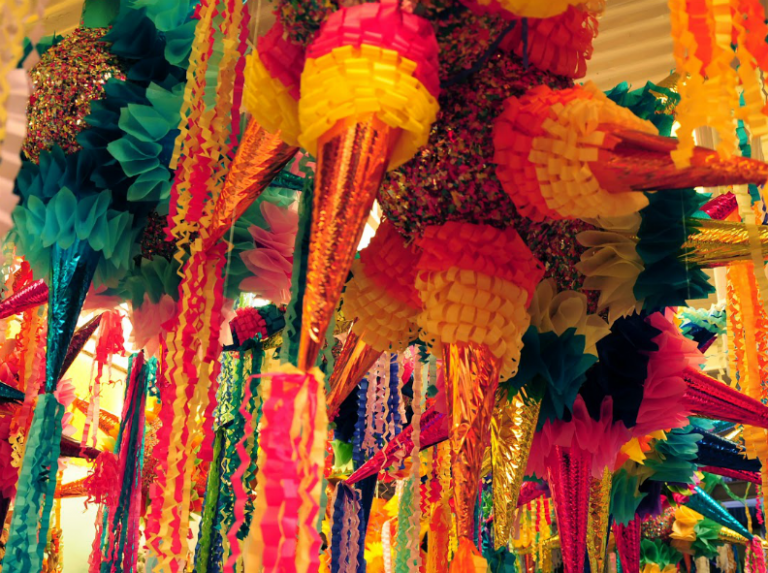
Significado /Meaning
Con el paso del tiempo, la piñata pasó a ser un elemento infaltable en las fiestas mexicanas, sobre todo en las Posadas, como se les conoce a las fiestas previas a la Navidad en México. / With the passage of time, the piñata became an essential element in Mexican parties, especially in Posadas, as they are known to the parties prior to Christmas in Mexico.
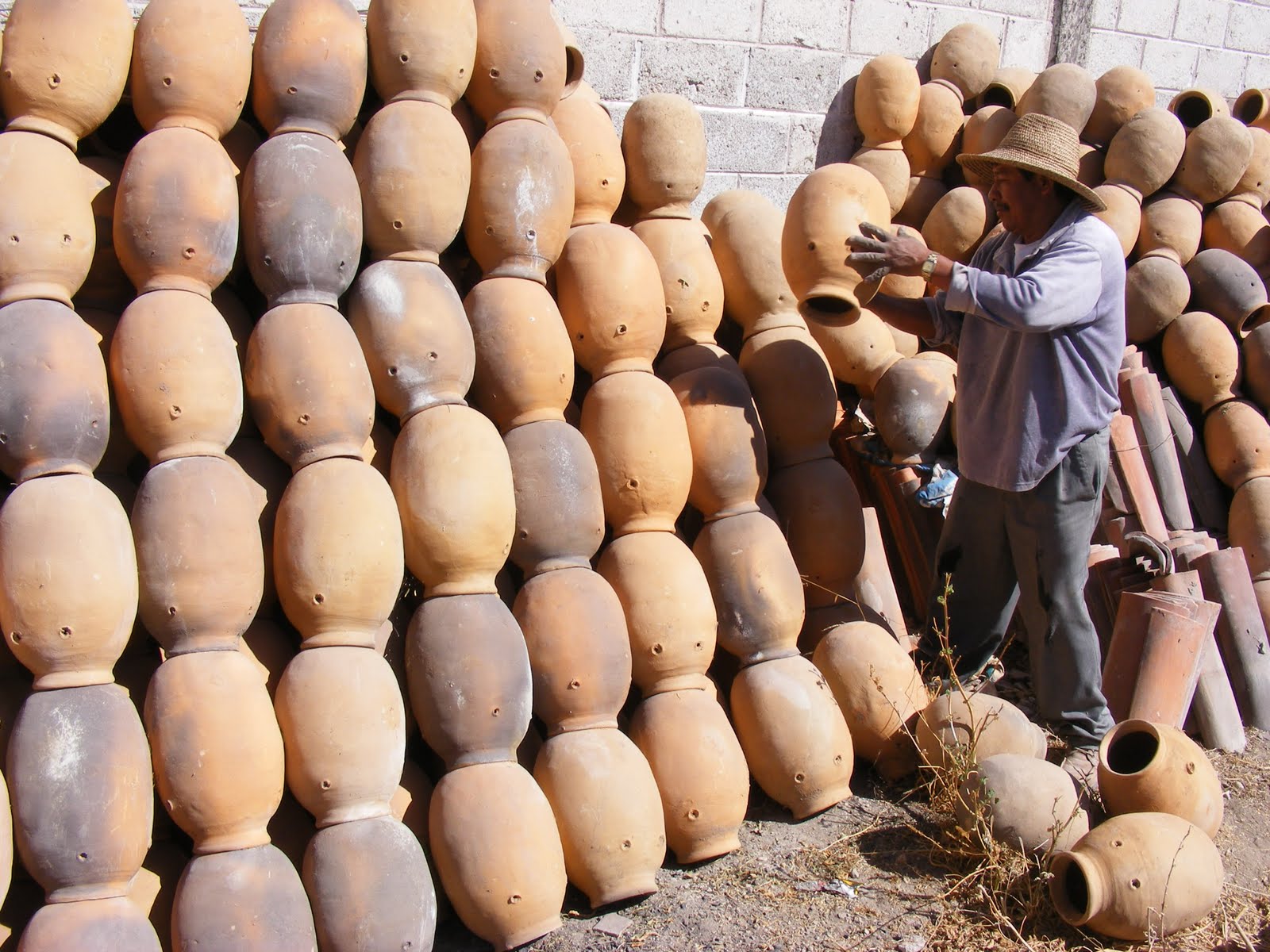
La piñata tradicional se elabora con una olla de barro que es decorada con colores brillantes. A esta misma se adhieren siete conos o picos que terminan dándole la forma de una estrella. La piñata se rellena con dulces y frutas de temporada. Para romperla se cuelga de un lazo o cuerda que la mantiene en lo alto; el reto consiste en quebrarla con un palo mientras se tienen los ojos vendados. / The traditional piñata is made with a clay pot that is decorated with bright colors. Seven cones or peaks adhere to it, which end up giving it the shape of a star. The piñata is filled with sweets and seasonal fruits. To break it, it hangs on a rope or rope that keeps it up; The challenge is to break it with a stick while you are blindfolded.

El significado religioso de la piñata está presente en sus elementos decorativos; por una parte, el forro que la recubre, al ser de colores llamativos, es asociado con la tentación, mientras que los siete picos que sobresalen sobre su superficie se vinculan con los pecados capitales. El hecho de romper la piñata con los ojos cubiertos implica un acto de fe, en el que la fortaleza del individuo debe prevalecer para vencer la tentación del pecado. / The religious meaning of the piñata is present in its decorative elements; On the one hand, the lining that covers it, being of striking colors, is associated with temptation, while the seven peaks that protrude above its surface are linked to the capital sins. The act of breaking the piñata with the eyes covered implies an act of faith, in which the strength of the individual must prevail to overcome the temptation of sin.
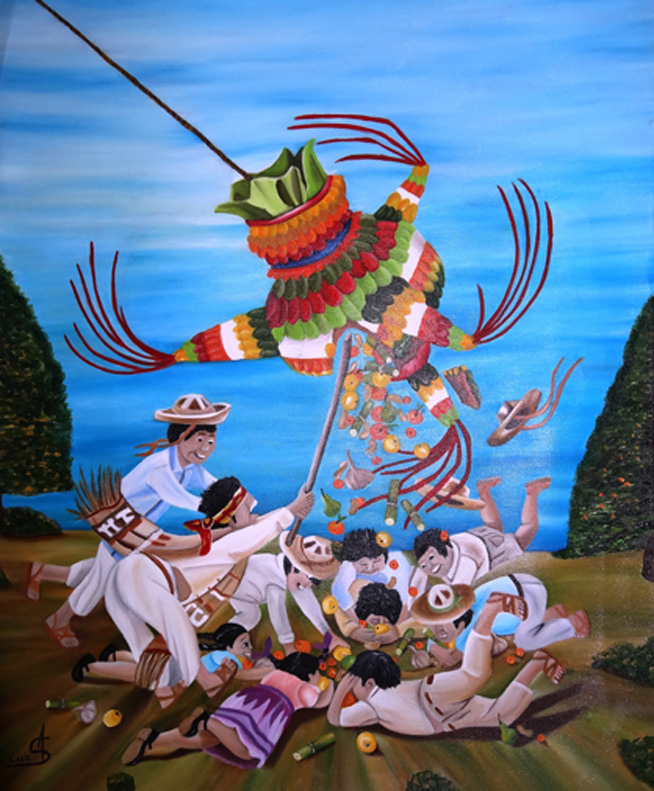
Los dulces y frutas que se utilizan como relleno de la piñata simbolizan los dones y regalos celestiales por haber vencido al mal, de tal manera que, al romper la piñata, se recompensa a los fieles por no abdicar en su lucha contra el demonio. / The sweets and fruits that are used as a pinata filling symbolize the gifts and celestial gifts for having overcome the evil, in such a way that, when breaking the piñata, the faithful are rewarded for not abdicating in their fight against the devil.

Las piñatas son hoy en día un símbolo de unidad familiar, cantos típicos y mucha alegría previa a Navidad…. ¡Vive esta alegre tradición en el Caribe Mexicano! / The piñatas are today a symbol of family unity, typical songs and much joy prior to Christmas …. Live this joyful tradition in the Mexican Caribbean!
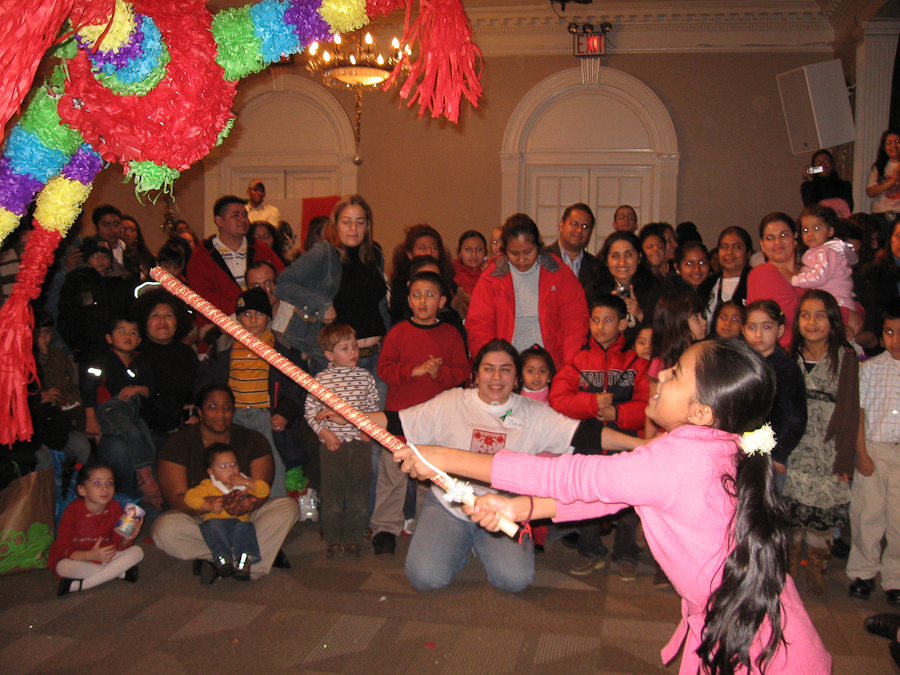
“ …No quiero oro, ni quiero plata yo lo que quiero es romper la piñata…”
” I do not want gold, I do not want money, what I want is to break the piñata…”
